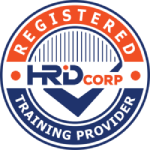About this Training Course
The drillstring is often considered to be one of the most simple pieces of equipment in use on a drilling rig. Ninety-nine percent of the drillstring comprises plain tubes that are just screwed together. However, the Bottom Hole Assembly can go to the other extreme; including directional and lithological data and directional drilling equipment.
The principle tasks of the drillstring are also deceptively simple:
- To convey each drilling bit to the bottom of the hole and then retrieve it when worn;
- To act as a conduit to convey drilling fluid at high pressure down the hole to the bit; and
- To transmit torque from the surface to the bit.
A secondary task of the drillstring is to run and cement liners and act as the landing string for casings run and hung off in sub-sea wellheads. Indeed, deepwater landing strings are currently pushing the limits of conventional drillstring design. In performing these roles, the drillstring is exposed to a complex combinations of loads downhole including tension, compression, torque, bending, burst and collapse pressures, axial, lateral and torsional vibration, all under extreme temperatures. It also has to be able to resist corrosion and abrasion.
Drillstring failures can result in significant lost time and in some instances, significant well control problems or even the loss of the well.
- At best, a washout will require a round trip to locate and replace the leak. However, in Managed Pressure Drilling where the well is statically underbalanced, a shallow washout can lead to a severe well control challenge.
- Loss of the ability to circulate can lead to pack off in the annulus and stuck pipe.
- A twist off in open hole can prove difficult or even impossible to recover leading to significant financial impact of the loss of expensive MWD/LWD and/or directional tools and requiring a lengthy sidetrack. If it happens close to the previous casing shoe, it could lead to loss of the hole section and a change in the casing design for the well. It may result in not being able to reach TD with the required hole size.
Historically, drillstring design has been a very simplistic uni-axial engineering process. The industry has relied on very conservative design factors to avoid drillstring failures. However, as wells become deeper, hotter and with challenging directional demands, the drillstring has to be subjected to the same (if not more) rigorous engineering design as Casing and Tubing.
This 5-day course will address all elements of drillstring selection and design, integrating drilling optimisation with drillstring failure prevention. Participants will learn about the mechanical properties of all drillstring components, including their connections, both as individual pieces and when made up into a drillstring. Participants will also develop skills in the process of designing a drillstring using manual uniaxial and triaxial design techniques as well as spreadsheets and commercial tubular design software. Particular focus will be given to the impact and prevention of downhole drillstring vibration and failure. Equally, there is emphasis on how a comprehensive drillstring inspection process can minimise the risk of drillstring failures downhole.
At the end of this course, participants will be able to:
- Describe the parameters used to specify drill pipe and drill collars and their respective connections
- Identify relevant industry standards and recommended practices relating to the specification of drillstring components and the design of drillstrings
- Describe the features of tool joints
- Name the different types of drill collar and explain their use
- List the common components of a drillstring other than drill pipe and collars, and explain the use of each
- Explain why heavy wall drill pipe is used
- Explain the significance of the neutral point
- Explain the different effects that stabilisers can have on a drillstring
- List the types of failure that can occur down-hole in a drillstring, describe their causes and explain how they can be recognised
- List the four factors that will determine the significance of fatigue in a particular case
- Describe the vibration modes of a drillstring and how to control each of them
- Explain the inter-relation between the tensile strength of a tool joint and the make-up torque used when running the string, and say where the necessary information can be found if you need to check a specific case
- Describe how the tension in a drillstring affects its resistance to burst and collapse, and how pressure affects its tensile strength
- Explain the difference between uniaxial and triaxial design and be able to calculate the Von Mises’ equivalent stress in tubulars
- Explain how slip-crushing can limit the loads from tensile loading of a drillstring and how this can be managed in deepwater landing string design
- Calculate the collapse resistance of the drillstring under biaxial load conditions and explain how this can be a critical load for drill pipe across a BOP during HPHT Well Control
- Determine the resistance of tubulars to buckling
- Specify the design factors used in designing a drillstring
- Explain how material selection can be used to prevent corrosion and how H2S can restrict the grade of pipe that can be used in the drillstring
- Calculate the required lengths of drill collars and heavy wall drill pipe in different types of bottom hole assembly
- Calculate the size(s), and – if more than one – the length of drill pipe required for a specified depth and bottom hole assembly
- Explain the terms, bending strength ratio and stiffness ratio, and what effect these parameters have on the drillstring
- List the surface operations that could damage a drillstring if done carelessly
- Explain the objectives of inspecting the drill pipe and collars
- Describe the various types of inspection which can be carried out, and explain the principles of the equipment used for each
Personnel directly or indirectly involved in the design and delivery of deepwater exploration and development wells:
- Office based planning and delivery Well Engineers
- Drilling Superintendents
- Wellsite Supervisors (Drilling Supervisors and Toolpushers)
- Drilling Contractor Drilling Engineers
- Service Company Integrated Project Management Drilling Engineers
Your expert course leader has more than 30 years of experience in the Drilling Industry. He worked offshore as a Roustabout and Roughneck while studying for his B.Eng in Mining Engineering. After graduation, he joined Shell in 1985 and worked as a Drilling Engineer and Drilling Supervisor on-site and in the office in a wide range of onshore, offshore and deepwater environments.
He served as the examiner for Shell’s “Round 2” Competence program and edited the Shell Well Engineering Learning Manual. He is the technical author of several corporate Well Control and Casing Design standards and training manuals.
Since 2000, he has worked as a Well Engineering Consultant. In addition to lecturing and general consultancy in Casing Design and Well Control, he specialises in Deepwater and HPHT Well Control coaching, rig team building and simulation. He pioneered the concept of “Drilling the Well on a Simulator”, working closely with drilling simulator vendors, operators and drilling contractors to produce a realistic and relevant training environment. This enabled integrated rig teams to be exposed to well specific well control and other operational challenges, develop and then practice response strategies.
To further optimise your learning experience from our courses, we also offer individualized “One to One” coaching support for 2 hours post training. We can help improve your competence in your chosen area of interest, based on your learning needs and available hours. This is a great opportunity to improve your capability and confidence in a particular area of expertise. It will be delivered over a secure video conference call by one of our senior trainers. They will work with you to create a tailor-made coaching program that will help you achieve your goals faster.
Request for further information about post training coaching support and fees applicable for this.




